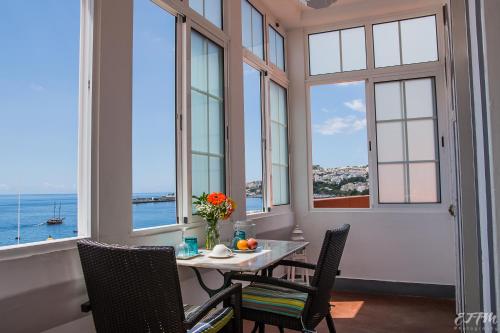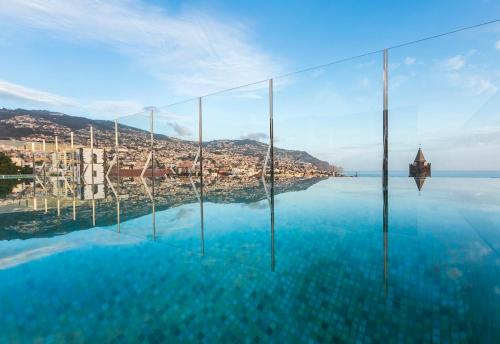Laurisilva of Madeira, Portugal
It must have been an exciting time during the ‘exploration era’ when sailors would happen upon an undiscovered outcrop of land. Something new to draw on a map; something new to take back as news to a royal court; and somewhere new to stop on the next journey into uncharted waters.
But, in some ways, the most exciting parts of these new discoveries have actually turned out to be the old.
On these isolated pockets of land, human hands had not interfered in the name of progress.
For many of them, nature had also not been troublesome because there was a relative consistency in climatic conditions.
And so it was on the Portuguese island of Madeira that explorers discovered the laurisilva – an ancient forest that had been virtually wiped out.
It once covered much of southern Europe tens of millions of years ago but now only a few small pockets on islands of the Atlantic Ocean exist. Madeira has the largest of them.
The forest is mainly comprised of evergreen trees and bushes with flat, dark green leaves. It’s also referred to as a ‘laurel forest’ although not all the plants are actually from the laurel family.
The laurisilva of Madeira has at least 76 types of native plants as well as the animals which rely on them.
Today, the heritage-listed part of the laurisilva makes up about 20 per cent of the whole island. You can easily access it from various different approaches.
One of the most popular for tourists is from Ribeiro Frio (although it is often full of tour buses and might not be the best option for an independent traveller).
A lot of the levada walks in Madeira go through the laurel forests so you can combine two experiences in one.
For those of us who aren’t botanists, the laurisilva make look like many other forests you’ve seen before. In some ways, that is the case.
It is lush and green and beautiful – different plants reach to different heights and struggle against each other for light and water (although after tens of millions of years, there’s a fairly harmonious balance between them all).
You will see a variance as you go through the altitudes, though. Ancient trees and giant ferns tend to grow lower down while smaller and tougher species cling to the cliff faces higher up.
You don’t need to travel into the depths of the island to see the impact of the laurel forests, though.
The day before I take the drive to Ribeiro Frio, I see a man at the main market in Funchal selling herbs. A closer examination revealed that the large bushels of dried leaves on one side of his stall are actually from the laurel trees.
You might know them better as ‘bay leaves’ and they’re a popular ingredient in cooking on Madeira.
In fact, one evening at a restaurant I see them on my dinner. The dish is called ‘espetada’ and is essentially a skewer with large chunks of meat grilled over open flames.
Traditionally the skewers were made from the branches of trees in the laurisilva. These days the sticks are metal but the leaves from the tree are still cut up and used as a flavour on the meat while it’s cooked.
It’s an old Madeiran cooking tradition but I’ve never seen it before.
There’s a nice synergy between walking through the laurisilva one day and eating food with its leaves another. Even for the modern explorer like me, discovering a new island still brings treasures from the past.
THE BEST ACCOMMODATION IN MADEIRA
Although there are a few areas you could stay in Madeira, I think it makes sense to base yourself in the capital Funchal and do trips from here.
BACKPACKER
For a backpacker option, I recommend Santa Maria Hostel, which is in an old renovated school.
BUDGET

If you would like something affordable, Vitorina Corte Guesthouse has lovely rooms right by the water.
BOUTIQUE

With an amazing pool, Castanheiro Boutique Hotel is a great choice for something with style.
LUXURY
And when it comes to luxury, Les Suites at Cliff Bay is an incredible property!
Time Travel Turtle was a guest of Porto Bay Hotels and Resorts and Madeira Promotion Bureau but the opinions, over-written descriptions and bad jokes are his own.
I didn’t know there were laurisilva forests in Madeira! I visited the laurisilva forest in La Gomera (Canary Islands) and it seemed like a magical forest. Loved it.
I think what’s so magical about it is that there is so little left. You have to travel to these tiny and remote islands to see forests that once stretched across much of southern Europe. I hadn’t heard much about them before I visited Madeira. Now I want to get to the Canary Islands too!
Just wanted to add that I’m sure you’d find La Gomera fascinating. I didn’t have much time there as I was staying on Tenerife where the volcanic scenery, as well as the lush green gorges, completely blew away any pre-conceived ideas I had of that island.
I recently had a wonderful time exploring the laurel forests on La Gomera. Similar but a little different, as the trees there are almost permanently engulfed in clouds and as a result covered in wet moss. Beautiful but a little creepy too.